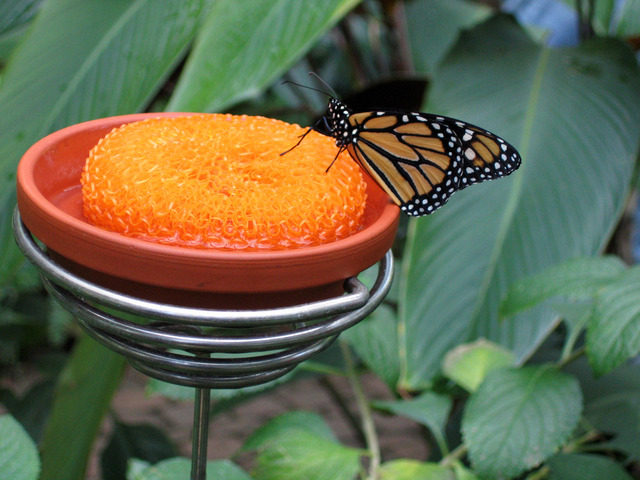
Taking a few of these simple steps will make your garden irresistible to butterflies.
Plant native flowering plants – Because many butterflies and native flowering plants have co-evolved over time and depend on each other for survival and reproduction, it is particularly important to install native flowering plants local to your geographic area. Native plants provide butterflies with the nectar or foliage they need as adults and caterpillars.
Plant type and color is important – Adult butterflies are attracted to red, yellow, orange, pink and purple blossoms that are flat-topped or clustered and have short flower tubes.
Plant good nectar sources in the sun – Your key butterfly nectar source plants should receive full sun from mid-morning to mid-afternoon. Butterfly adults generally feed only in the sun. If sun is limited in your landscape, try adding butterfly nectar sources to the vegetable garden.
Plant for continuous bloom – Butterflies need nectar throughout the adult phase of their life span. Try to plant so that when one plant stops blooming, another begins.
Say no to insecticides – Insecticides such as malathion, Sevin, and diazinon are marketed to kill insects. Don’t use these materials in or near the butterfly garden or better, anywhere on your property. Even “benign” insecticides, such as Bacillus thuringiensis, are lethal to butterflies (while caterpillars).
Feed butterfly caterpillars – If you don’t “grow” caterpillars, there will be no adults. Bringing caterpillar foods into your garden can greatly increase your chances of attracting unusual and uncommon butterflies, while giving you yet another reason to plant an increasing variety of native plants. In many cases, caterpillars of a species feed on only a very limited variety of plants. Most butterfly caterpillars never cause the leaf damage we associate with some moth caterpillars such as bagworms, tent caterpillars, or gypsy moths.
Provide a place for butterflies to rest – Butterflies need sun for orientation and to warm their wings for flight. Place flat stones in your garden to provide space for butterflies to rest and bask in the sun.
Give them a place for puddling – Butterflies often congregate on wet sand and mud to partake in “puddling,” drinking water and extracting minerals from damp puddles.
Place course sand in a shallow pan and then insert the pan in the soil of your habitat. Make sure to keep the sand moist.
